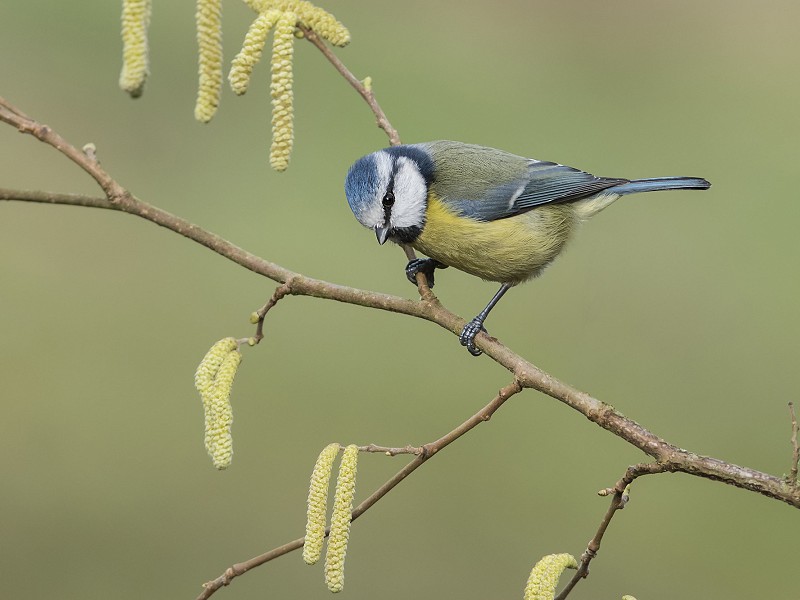Michael Blencowe’s Corona Wildlife Diary: Day four

As the world shuts down around us the uplifting role that wildlife plays in our lives becomes more vital than ever. So, for my own sanity, I’m going to keep a daily diary of what I find around my garden. Photograph the wildlife you can see from your window or in your garden and share your pictures on the ‘Sussex Wildlife Trust Nature Table’ page or to https://www.facebook.com/groups/525011657840898
Day Four
They’ve closed the schools, pubs, restaurants and cinemas. It’s really sinking in now just how serious this all is. I sat on the sofa last night and tried to think of a time when Britain has felt so vulnerable. All I could come up with was The Day of the Triffids.
Anybody remember the 1981 BBC adaptation of that John Wyndham novel? It freaked me right out when I watched it as a kid. Giant flowers with whip-like tentacles rampaging across England. I had to go and look at the plot summary on Wikipedia to remind myself how England overcame that plague of plants. Turned out we all escaped to the Isle of Wight.

The plants in my garden are beginning to bloom and as it’s still a bit early for many pollinating insects, some of our first flowers are banking on the breeze to spread the love.

You’ll all know male Hazel flowers. They’re the catkins; those droopy ‘lambs tails’ which cast their sulphur clouds of dusty love into the countryside. These clouds are made of a multitude of lonely pollen grains; each cruising on the wind hoping to find the female Hazel flower. If you look closely on the branches and you’ll see her, like a tiny Triffid, desperately trying to grab a grain with her bright pink tentacle tassels.

This windswept romance has occurred ever since the end of the last Ice Age when our defrosting land was a botanical blank canvas.
There were rich pickings for any plant that ventured way out west and Hazel was one of the first pioneers.
In an empty landscape, under open skies, it established its vast nutty empire becoming our most abundant tree species. But therein lies the problem. Hazel’s just not very good at being a tree, it doesn’t grow very tall. So, when the big boys started muscling into Britain, its claim to the canopy crown ended. Giant Oaks blocked the sun and banished Hazel to the shadows – an understory underdog.
And there in the dark, like Gollum, Hazel waited and waited; until we showed up. Mesolithic man, foraging around for food, acquired a taste for Hazelnuts. If you’ve ever witnessed me poking around with a spoon in the bottom of a Nutella jar it’s clear that this love of Hazelnuts, and our table manners, have changed little in the last 10,000 years.
Hazelnuts were a vital protein source for our ancestors and each nut is individually packaged in a little container for easy storage.
But Hazel took care of us in other ways too. It has a magical power of regeneration. Whatever doesn’t kill it just makes it stronger. Hack down a Hazel and, like the Hydra, it’ll bounce back mob-handed, sending up an army of new shoots. Cutting Hazel and allowing it to regrow – the art of coppicing – gave us a crop of strong, flexible poles. Over the centuries coppiced poles have a multitude of uses; firewood, fences, fishing rods, shepherd’s crooks, walking sticks, water diviners and magic wands. Hazel poles were the wattle in the ‘wattle and daub’ that held together our early homes. Hazel helped us build Britain.
And it built a Britain full of burly men with axes who marched into the wild woods and cut down those giant oaks. And as our woodlands were cleared the sunshine poured in and Hazel rose again and regained its place in our developing countryside. Perhaps we were part of its comeback plan all along?
Watching the news last night it looks like we’re all going to have to shut down for a while. The Prime Minister is saying it could be 12 weeks until we see the light of day and rise again like the Hazel.
I phoned my friend Richard, on the Isle of Wight, just to see if it was still an option for escape as it was in The Day of the Triffids. But it’s not. They’re out of toilet paper too.




One thought on “Michael Blencowe’s Corona Wildlife Diary: Day four”